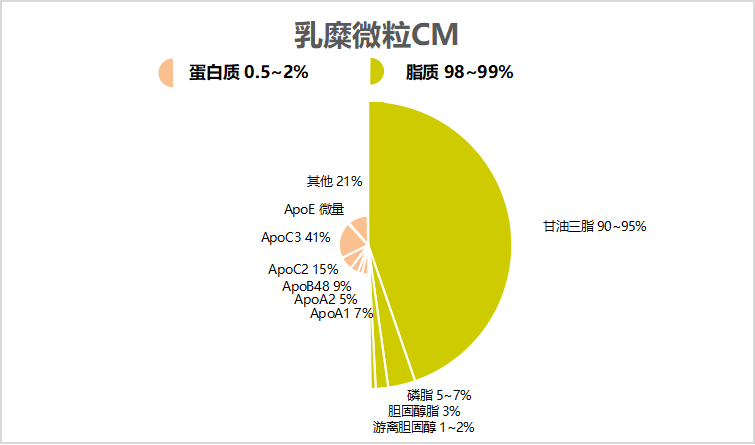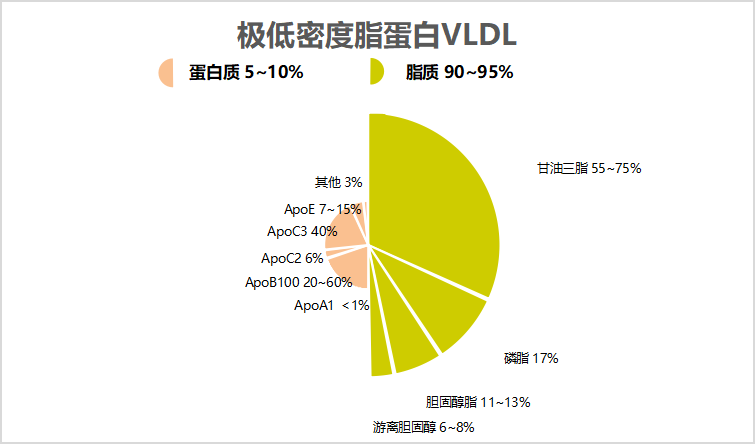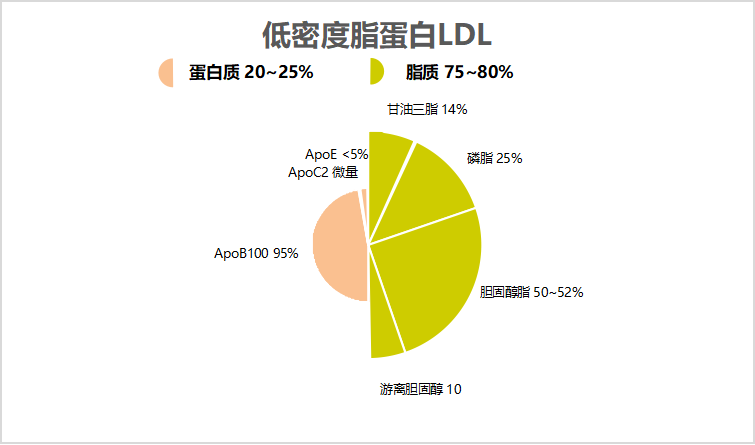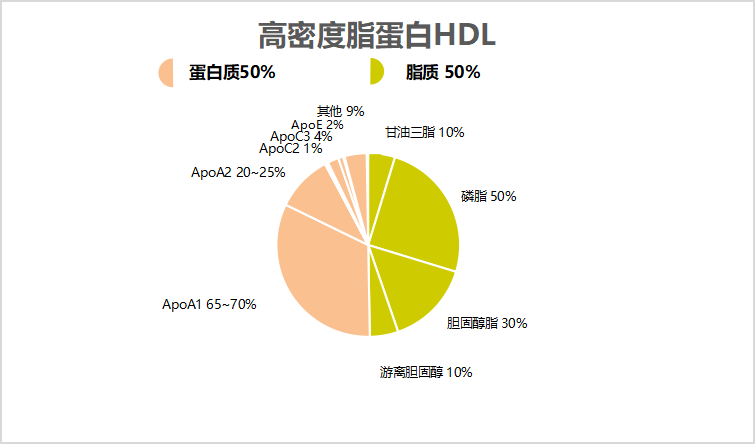Release date:2022-05-27
Whether for a routine physical examination or medical consultation, lipid profile testing is fundamental. Triglycerides (TG), total cholesterol (CHO), low-density lipoprotein cholesterol (LDL-C), and high-density lipoprotein cholesterol (HDL-C) are the four basic components of a lipid profile test. In recent years, new lipid tests such as small, dense LDL cholesterol (sdLDL-C) have also been widely used. Additionally, apolipoproteins are an important category of lipid tests. This article discusses the significance of apolipoprotein testing.

I.What are Apolipoproteins?
Blood lipids mainly consist of fats and lipids, where triglycerides are fats and cholesterol belongs to lipids. Both triglycerides and cholesterol are insoluble in water, so they require proteins to form lipoprotein complexes for transport and metabolism. Apolipoproteins are the main protein components of lipoproteins.
To date, over 20 types of apolipoproteins have been isolated from human blood, with the main ones used in clinical testing being apolipoprotein A (ApoA), apolipoprotein B (ApoB), apolipoprotein C (ApoC), and apolipoprotein E (ApoE). When we refer to high-density lipoprotein cholesterol (HDL-C) and low-density lipoprotein cholesterol (LDL-C) in routine testing, we are referring to the lipid components of lipoproteins. Apolipoprotein testing focuses on the protein components of lipoproteins.
The contents of various lipoprotein proteins and lipid components are shown in the following figure.





II.Apolipoprotein A
Apolipoprotein A can be divided into ApoA1, ApoA2, and ApoA4, among which ApoA1 and ApoA2 are mainly distributed in high-density lipoprotein (HDL). These two apolipoproteins account for about 90% of the protein components of HDL, so testing for ApoA1 and ApoA2, especially ApoA1, can represent the quantity of HDL in the blood. Under normal circumstances, their levels are positively correlated with HDL-C.
However, in pathological conditions, the protein and lipid components of HDL often change. In such cases, testing for ApoA1 and ApoA2, along with HDL-C, can provide a more detailed analysis of the pathological condition, leading to better intervention. ApoA2 mainly stabilizes the structure of HDL and activates hepatic lipase (HL) and hepatic triglyceride lipase (HTGL). In the endogenous metabolism pathway of lipoproteins, triglycerides in intermediate-density lipoproteins (IDLs) are hydrolyzed by HTGL and lipoprotein lipase (LPL) to eventually convert into LDL. Therefore, ApoA2 also plays a very important role in lipid metabolism in the body.

III.Apolipoprotein B
Apolipoprotein B can be divided into ApoB48 and ApoB100, with ApoB100 typically being referred to in fasting lipid tests.
In the fasting state, most of the ApoB is distributed in LDL, accounting for about 95% of the protein components of LDL. Therefore, the level of ApoB reflects the quantity of LDL in the blood and is positively correlated with LDL-C.
However, in some cases, there may be normal LDL-C levels but high ApoB levels, a condition known as "hyperapobetalipoproteinemia." This indicates the presence of a large amount of small, dense LDL (sdLDL) in the blood. When hypertriglyceridemia occurs, this situation may arise. Compared to other LDL, sdLDL contains more ApoB components and less cholesterol, and it has a higher atherogenic effect. Therefore, simultaneous testing for ApoB and LDL-C is beneficial for clinical judgment.

IV.Apolipoprotein C
Apolipoprotein C includes ApoC1, ApoC2, and ApoC3, among others. HDL serves as a reservoir for ApoC, which is necessary for chylomicrons (CM) and very low-density lipoproteins (VLDL) to obtain ApoC2 and activate lipoprotein lipase (LPL) on the surface of capillary endothelial cells in tissues such as skeletal muscle, cardiac muscle, and adipose tissue. This activation can increase LPL activity by 10-50 times and is an important apolipoprotein in the metabolism of lipoproteins. Conversely, the physiological role of ApoC3 is to inhibit LPL and interfere with the clearance of TG-rich lipoprotein remnants by LDL receptors on liver cells, resulting in slower clearance of TG-rich lipoproteins from the plasma and an increase in plasma TG levels. Therefore, testing for ApoC2 and ApoC3 is of great significance for analyzing lipoprotein metabolism.
The Chinese Expert Consensus on the Prevention and Treatment of Type 2 Diabetes Complicated with Dyslipidemia (2017 Revised Edition) points out that an increase in ApoC3 or the ApoC2/ApoC3 ratio, as well as an increase in the ApoC3/ApoE ratio, are manifestations of dyslipidemia.

V.Apolipoprotein E (ApoE)
ApoE is distributed in various lipoproteins, with chylomicrons mainly acquiring ApoE through HDL. ApoE can recognize LDL receptors, LDL receptor-related protein (LRP), and specific ApoE receptors, participating in the metabolism of various lipoproteins in the body. For example, on the surface of liver cell membranes, LRP recognizes and takes up chylomicron remnants and IDL, and specific ApoE receptors recognize HDL. Therefore, ApoE plays a very important role in the metabolism of lipoproteins.
ApoE is also produced in large quantities in the brain, necessary for neuronal repair, and is also related to Alzheimer's disease (AD).
In addition, the ApoE gene is polymorphic, with several common genotypes, each with different affinities for receptors, thus affecting lipoprotein metabolism. It is one of the most important genetic factors determining blood cholesterol levels.
During physical examinations or medical visits, attention should be paid to indicators such as apolipoproteins. Learning how to interpret various indicators on laboratory reports is beneficial, as once an abnormality is detected, it can be taken seriously. Especially for middle-aged and elderly individuals, who are at greater risk of cardiovascular disease, indicators such as cholesterol, triglycerides, and apolipoproteins on laboratory reports all indicate possible cardiovascular disease. However, these indicators are dynamic in the body and can change due to changes in lifestyle and diet. If there are no symptoms, or if there are no pathological changes after examination, a single abnormal increase or decrease in an indicator is not clinically significant and does not need to be overly worried about. If there are discomfort and changes in multiple indicators, one should relax, actively adjust and optimize lifestyle and diet, and follow the doctor's advice for treatment and regular follow-up.
Apolipoprotein testing reflects the body's ability to transport fats and cholesterol. Like blood lipids, the best preventive measure is to maintain good lifestyle habits, pay attention to a healthy diet, and engage in moderate exercise. Life is about movement, and health comes from life.
References:
[1]Zhang Rui, Zhao Fumei, Cong Hongliang. Synthesis, structure, and function of apolipoprotein E [J]. Jilin Medicine, 2019, 40(6):4.
[2]Zhou Chunyan, Yao Libo. Biochemistry and Molecular Biology. 9th Edition [M]. People's Health Publishing House, 2018.
[3]Wan Xuehong, Lu Xuefeng. Diagnosis. 9th Edition [M]. People's Health Publishing House, 2018.
[4]Joint Committee for the Revision of China's Adult Blood Lipid Abnormality Prevention and Treatment Guidelines. China's Adult Blood Lipid Abnormality Prevention and Treatment Guidelines (2016 Revised Edition) [J]. Chinese Journal of Health Management, 2017, 011(001):7-28.
[5]Jin Jinglu, Li Jianjun, Guo Yuanlin. Research status of apolipoprotein CⅢ [J]. Chinese Journal of Arteriosclerosis, 2016, 24(10):5.


